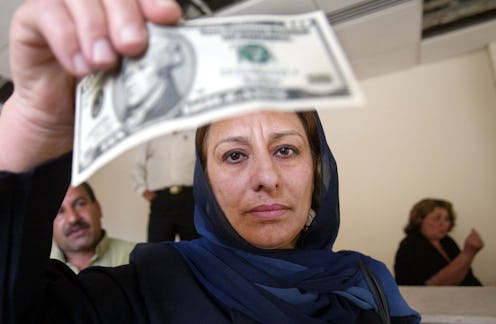Life
Why Being Female Costs You Money
Do you always feel like you're getting ripped off at the car dealership/drugstore/bank? You're not paranoid. The Wall Street Journal reports that women do pay more than men for similar goods and services. The WSJ was also nice enough to list the top five things that have gendered pricing so let’s have at it:
1. Cars
The American Economic Review published a study in 2001 that found race and gender discrimination in bargaining for a new car. The study showed that car dealers offered lower initial pricing to white men than to white women, who were both offered a better deal than black women. Pricing was also discriminatory at final mark up, where prices were around “50% higher for white women than for white men, and more than 100% higher for black women.” Yikes.
2. Deodorant
Apparently the secret behind these differentiating price points is the size of the sticks. Gender Issues published a study in 2011 that found that on average, men’s deodorant is 2.86 ounces while women’s deodorant is only 2.29 ounces, and because the deodorants are around the same cost, women end up paying about 20% more per ounce. That stinks (bad pun, couldn’t resist).
3. Haircuts
I have to argue with this one — cutting and drying a man’s hair is very different from cutting and drying a woman’s, unless they have the same hair cut (you know, Jared Leto at the Globes or Anne Hathaway at the Oscars). It takes more time and effort to cut and blow dry longer hair, and salons should be able to adjust pricing for that. Nice try, WSJ.
4. Dry Cleaning
The same 2011 study in Gender Issues found that dry cleaning costs more for women. In fact, “the average price to clean a men’s shirt was $2.06, while it was $3.95 for a woman’s shirt — and that’s before considering the added cost of shirts made from special fabric like silk or rayon, or with embellishments like sequins or pleats.”
5. Mortgages
The Journal of Real Estate Finance and Economics released a 2011 study that concluded, “women with credit scores and other qualifying factors similar to men pay more for their mortgages.” Women, on average, end up paying a 0.4% higher interest rate on their mortgages than men.
And while there are still many more cases of gender discriminatory pricing (shaving cream, etc.) and many goods and services that tend to be purchased by women or men (bikini waxing, etc.), they all point to one central issue. Nicholas Guittar, an assistant professor of sociology at the University of South Carolina Lancaster told Wall Street Journal that these costs exist “because the dialogue in our culture is that men and women are different — we call each other the ‘opposite sex’.” Perhaps we’ll never know which gender is more expensive to identify with, but you can be sure that until we have gender equality, we shouldn’t expect pricing equality.
